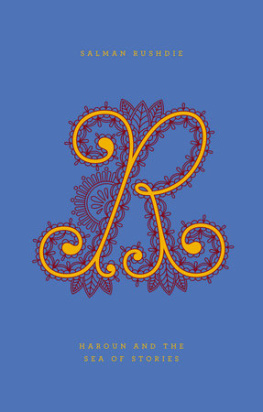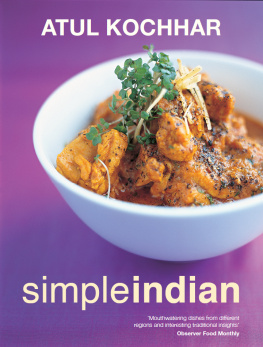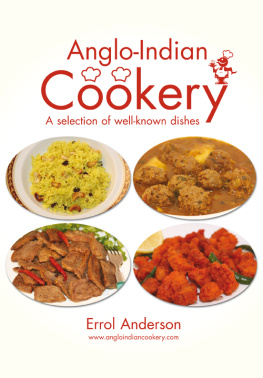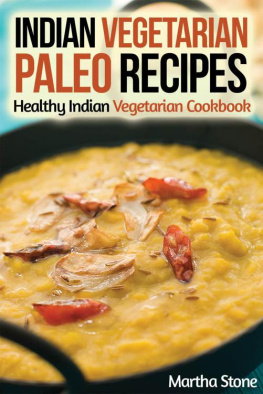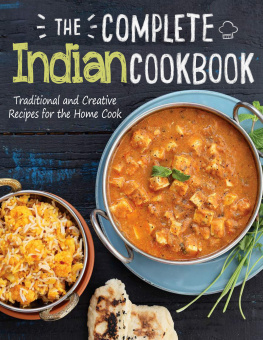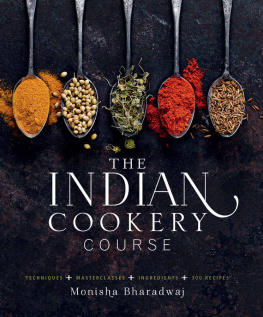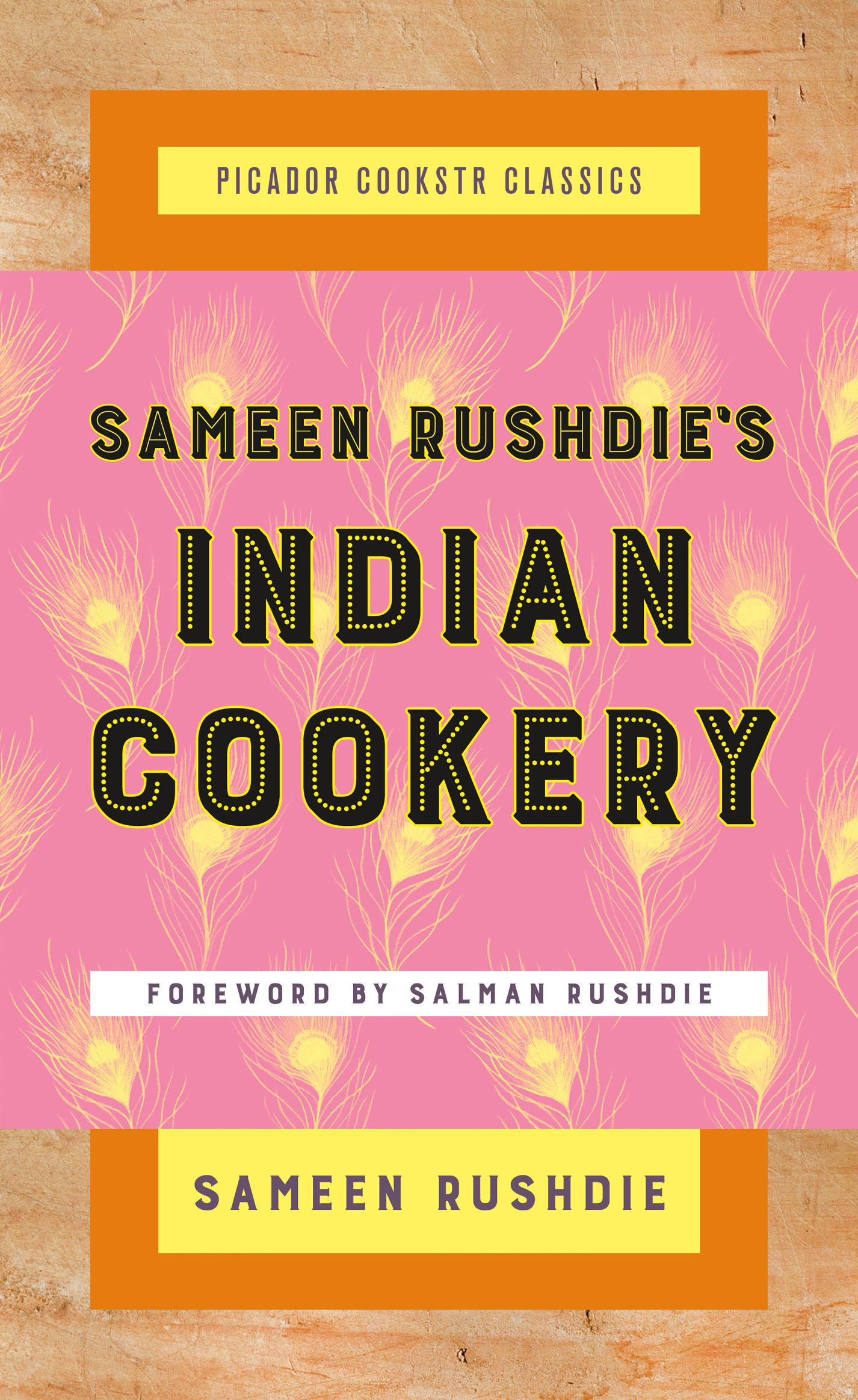Contents
Guide
Pagebreaks of the print version

The author and publisher have provided this e-book to you for your personal use only. You may not make this e-book publicly available in any way. Copyright infringement is against the law. If you believe the copy of this e-book you are reading infringes on the authors copyright, please notify the publisher at: us.macmillanusa.com/piracy.
TO ABDUL MOMEN
But for whom
Sameen Rushdies classic cookbook will allow home cooks to fill their tables with some of the finest food India has to offer.
Rushdie takes readers on a personal culinary journey, driven by an impulse to share and celebrate North Indian food from her mothers kitchen, Kashmiri-Punjabi cuisine cooked in her grandmothers home, and recipes influenced by living in Bombay and many visits to Bengal.
Rushdie explains how to use spicesand balance flavor, color, and texture. She offers a marvelous array of meat, poultry, fish dishes, and vegetarian spreads, putting together menus for the eager home cook and providing easy weeknight staples for when youre crunched for time.
Interspersed with recipes for creamy daals, tangy relishes, and refreshing raitas are sections on the medicinal value of many Indian spices, how to find and store fresh ingredients, and the techniques behind different cooking methods.
Whether you are just getting started on your culinary adventure or are a seasoned home cook, Sameen Rushdies recipes will fill your kitchen with the irresistible pleasures of Indian cookery.
Picador Cookstr Classics is a series collaboration between Cookstr and Picador. It brings to the forefront some of the most beloved cookbooks of the last decades, with recipes and techniques that todays chefs continue to draw from again and again. Presenting these enduring titles in their original form, with the recipes and headnotes just as they were written decades ago, preserves a unique piece of food history while reminding us just how relevant these masterfully crafted cookbooks are to a new generation of home cooks. New forewords champion what made each Picador Cookstr Classic such an important cookbook when first published, and why each is well worth rediscovering.
When this book was first published almost thirty years ago, Indian food was still very much the poor relation of the American family of cuisines. Along with Indian movies, Indian literature, Indian art, and even India itself, Indian food occupied a sort of junkyard corner of the American mind, little thought about, arousing little interest. There were pioneers trying to change thatPaul Bhalla with his groundbreaking restaurant in Los Angeles (where I was surprised to see the waitresses wearing harem pants), Madhur Jaffrey with her celebrated booksand in New York you could find Indian eateries in the Jackson Heights part of Queens, along the Curry Hill section of Lexington Avenue, and even one or two in midtown. A decade later, in Chicago and in Vancouver, Canada, Indian restaurants began to make their mark. However, most Americans only rarely thought of going out to eat an Indian meal (and if they did, they expected it to be a low-cost, bargain-basement outing). And very few Americans indeed, except for those of South Asian origin, ever thought of cooking themselves an Indian meal at home.
Times change, and tastes change with them. Today, Indian art commands attention; Indian writers are celebrated around the world; Bollywood films have acquired legions of American fans, particularly for their songs and dances; India has moved out of that junkyard corner, to seize an ever-larger share of the American mind. Seems like the right time for my sisters classic Indian Cookery to make its American debut.
In a small, encouraging, brotherly way I played my own part in the making of this book. Before Sameen came to live in London, I had fancied myself to be a competent Indian cook. Then she showed up, and it became clear how far out of her league I was. After that it was easier to go over to her place and eat her food than to cook my own. When she had the idea of writing a cookbook I was strongly supportive of the idea, and consequently, during those inevitable moments in any writers life when the work is proving more obstinate and difficult than expected, she would tell me the whole thing was my fault. I happily accept the blame, because what she produced was a book that has magnificently stood the test of time.
I was also one of her recipe testers. As Sameen says, the recipes in this book are not limited to those she learned from our mother Negin Rushdies home cooking, but include dishes from many other regions of the subcontinent. However, home cooking was the books first inspiration and stands at its heart, the problem being, as Sameen tells us, that my mothers relationship to quantities, weights, and measures was, to say the least, inexact. Sameen needed to produce recipes that could easily be reproduced by people with no knowledge of the food eaten at our home, and one of the few people other than herself who knew how that food had tasted and should taste was me. So I was instructed by her to cook many of the dishes included here, strictly according to the recipes, and then we would discuss what alterations might be needed so that they could taste as much like the food that came out of our mothers kitchen as possible. This was delicious work.
Im obviously not completely objective about this book, but I can say that many of our London friends still have it on their kitchen bookshelves and say emphatically that its the best Indian cookbook they have ever found and the only one they use. My instinct is that my American friends will quickly come to the same conclusion.
In many kitchens across India, Pakistan, and Bangladeshkitchens in the kinds of households in which a cook is employedyou will find copy-books hanging from nails. I have often thought of these copy-books as the true treasures of the Indian gastronomic world, because they contain instructions that allow the cook, the khansama, to reproduce the precise nuances and flavors that the family prefers.
It is the achievement of Sameen Rushdies Indian Cookery to be one of those copy-booksto have given everyone the ability to reproduce the most delicious Indian food ever cooked, which was, of course, the food we ateas children and adultsat Negin Rushdies table.
I know that our mother would be proud. She would also say that this, its first American appearance, is long overdue.
Salman Rushdie
2018
Its incredible to think that a period of nearly three decades has passed since I wrote this book. Somehow less surprising to me is that it remains relevant today. I believe the recipes have a timeless appeal as, for the main part, they lie at the heart of a North Indian culinary tradition. This collection is complemented by the inclusion of recipes from other traditions and regions of the subcontinent, some personal favorites collected along the way of life. The dishes are family hand-me-downs based on food cooked in the best, unpretentious domestic kitchens from where both the simplest and most lavish menus have emerged.
I am heartened by, and take as a compliment, comments made by Indian and Pakistani cooks that this is their favorite go-to book, as the food feels totally familiar to them. The selection offered here is the fare of a classic repertoire, whether cooking delicious, ordinary, everyday meals or a sumptuous feast served up to impress at a dinner party! I intended it to be a useful resource, as much for the absolute beginner as for the experienced chef: for those who, like me, cook Indian food all the time; for the cook who produces the occasional Indian meal; as well as those completely new to Indian cooking. All three such cooks probably already have a preconceived idea of what they think Indian food or a curry meal should taste like.


